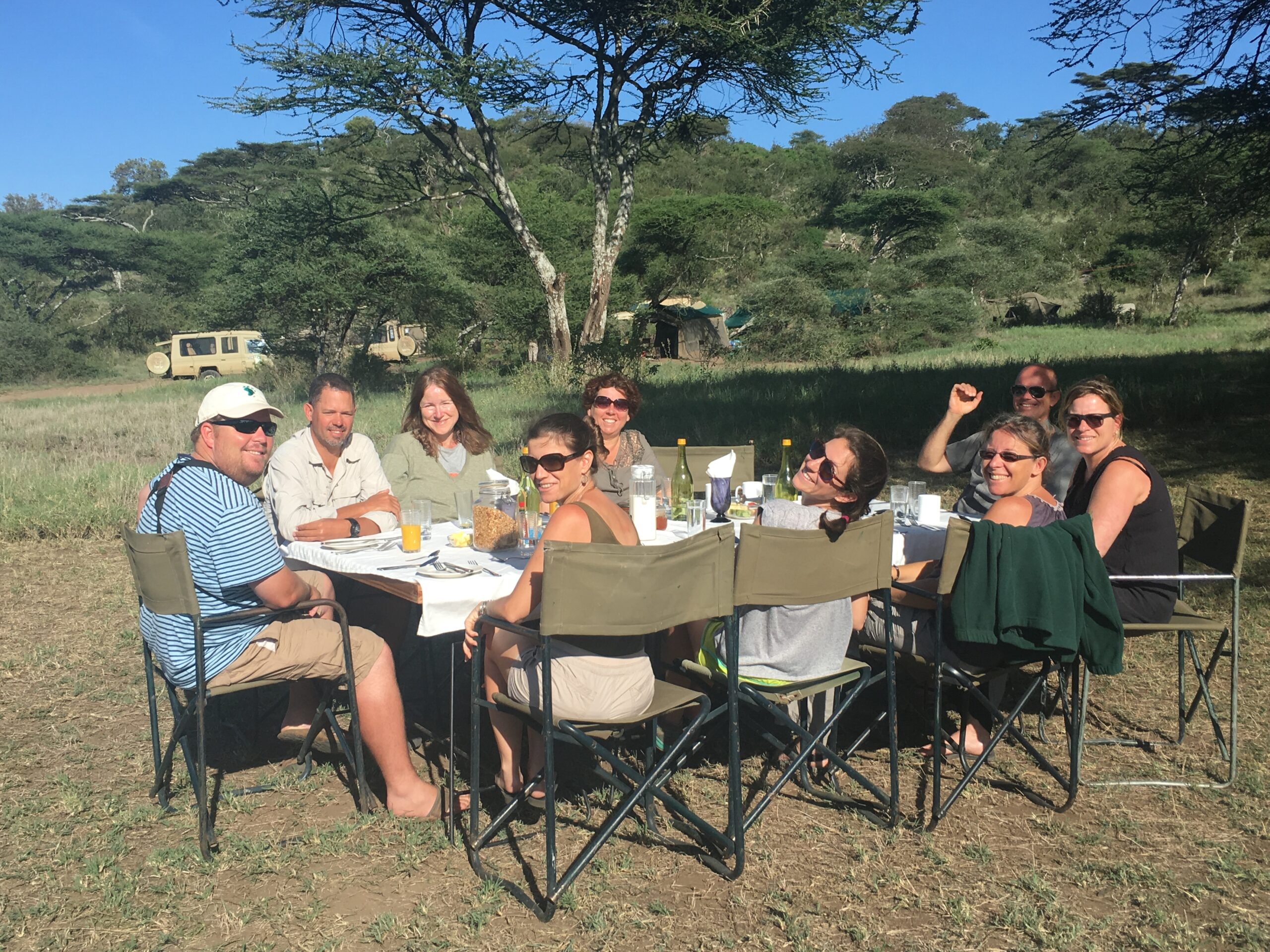It’s hard to believe that just last month I spent 11 nights in northern Tanzania. Let me tell you, there’s so much more to experience here than simply game drives. My trip was less focused on wildlife, wildlife, wildlife and more focused on “alternative” activities, like hiking and biking. Let me explain…
Arusha
Like most travelers to Tanzania, my journey began in Arusha, a bustling little city near Kilimanjaro International Airport, and known as the “safari capital” of Tanzania. And the views aren’t half bad either: It sits in a lush valley at the base of Mt. Meru. Here, I spent one night at Rivertrees Country Inn. Rivertrees is a lovely place to rest up after a long transatlantic flight, complete with an enormous, relaxing garden onsite. It’s always nice to have one night of “recovery” in-country before safari.
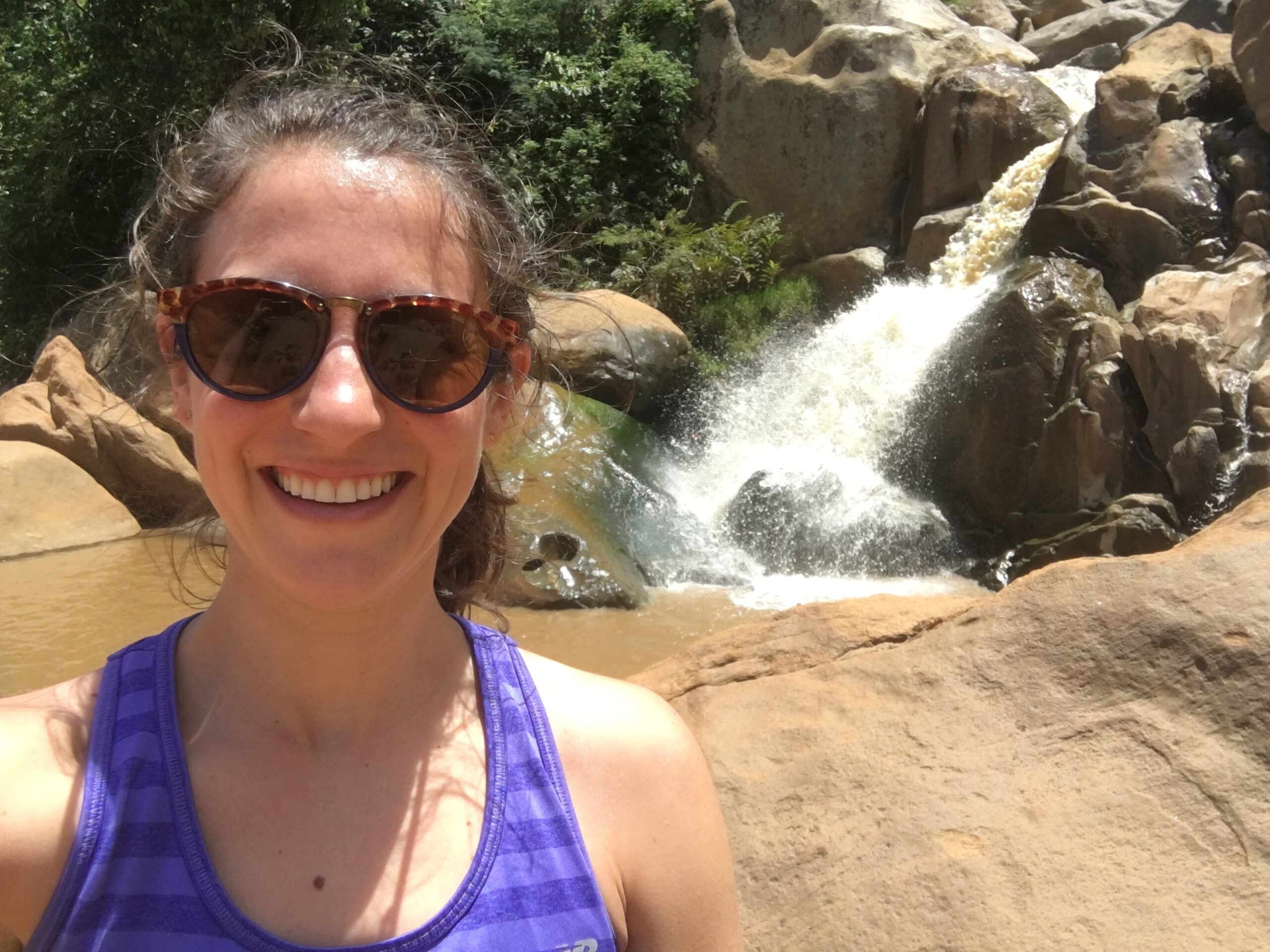
A good rest meant I was ready for the next day’s waterfall adventure!
Lake Manyara National Park
In the morning we drove about 2 hours toward Lake Manyara National Park. It’s an easy drive, but for those with the money and without the time, flying is often recommended. That said, my entire trip was driving and it does have it perks. Flights are quick but driving gives you a sense of the “real” Tanzania, with greater exposure and understanding of local life. Also, road transfers provide you with more opportunities to get to know your guide and ask more questions. The connection is much more personal and the conversations are often more insightful.
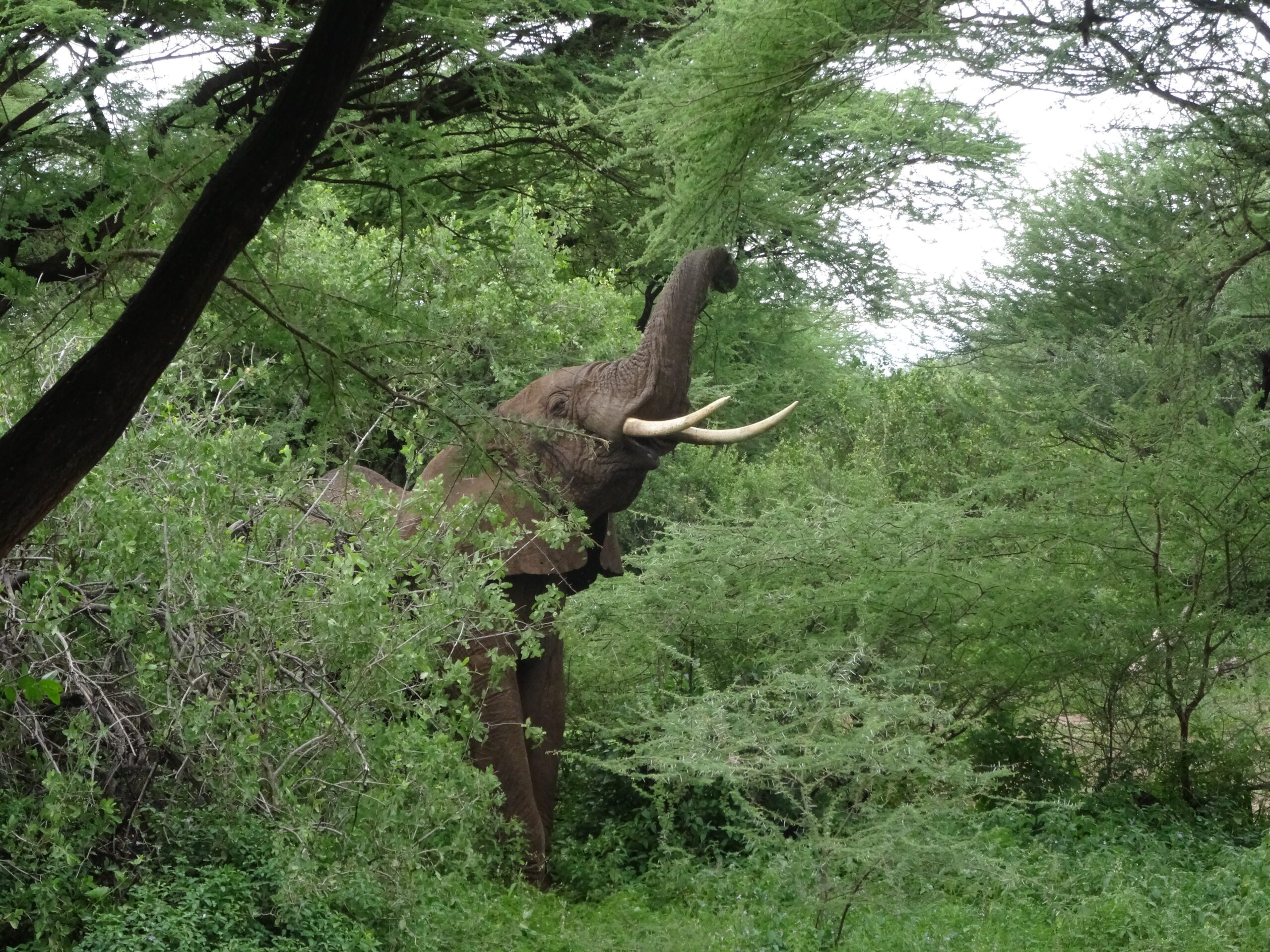
An elephant in Lake Manyara.
Enroute, our driver pulled over on a rural side road and surprised us with a picnic lunch next to a beautiful waterfall. From there, we hopped on mountain bikes and cruised through some villages and winding dirt roads until we arrived at the southern gate to Lake Manyara National Park. It was so much fun! The sun was shining, we could see the lake in the distance, and were greeted by countless school children on their way home. It was a refreshing and laidback kickoff to the safari. And it really felt like we were seeing Tanzania. Side note: If you are relatively in shape, it’s an easy ride but do make sure you feel comfortable on a bike first. After going through the park gate, we drove to Lake Manyara Green Camp for our first night in the bush.
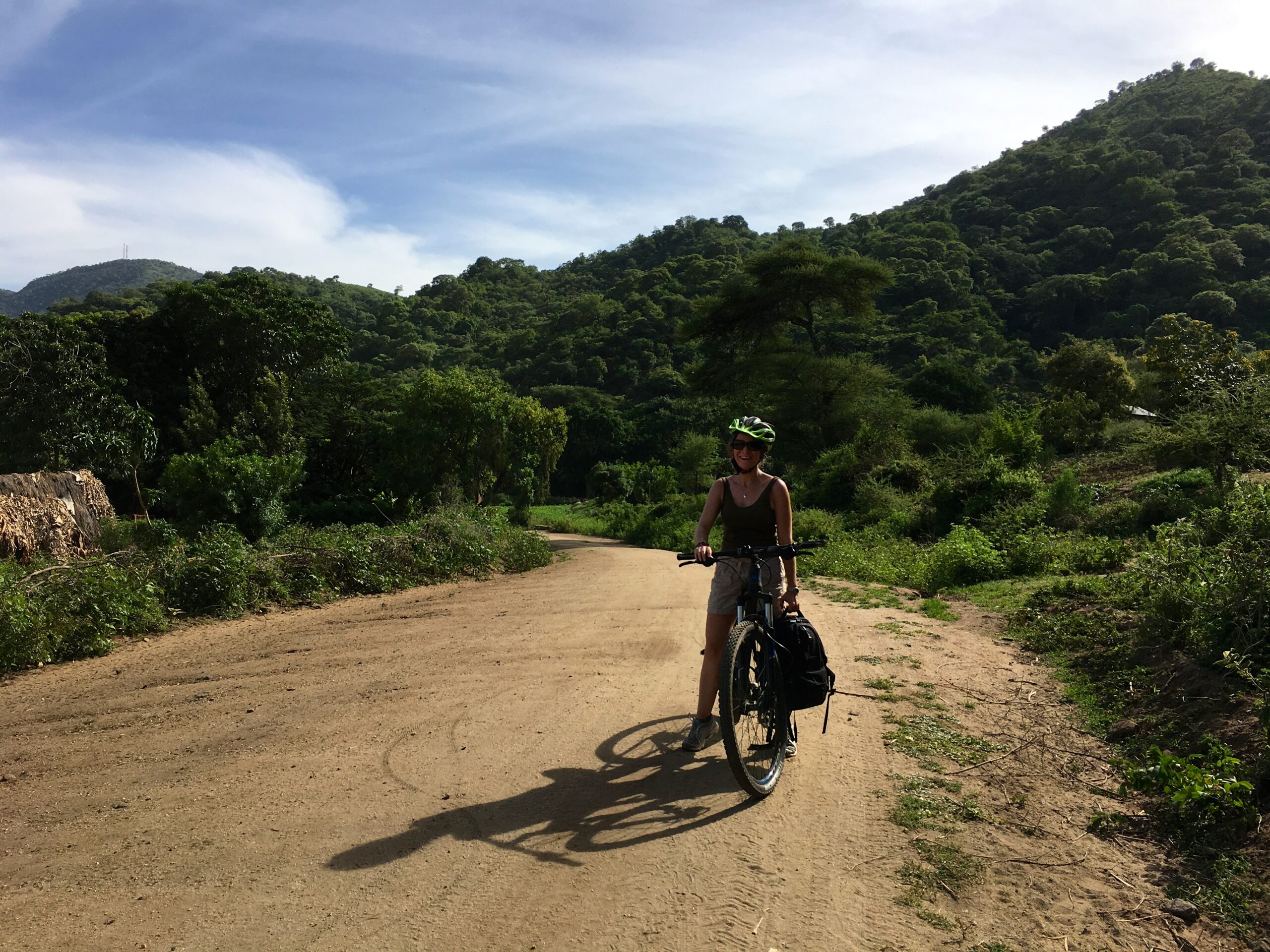
I took this as my friend and I stopped to rest mid-cycling; what a beautiful day!
Our camp at Lake Manyara was a temporary setup along the lakeshore because they were rebuilding on the original site after a recent flash flood. But the scenes across the lake and the lights twinkling from the small fishing towns were no less beautiful. In the evening we ate our bush dinner next to the lake with lanterns while the full moon reflected in the water. It’s not typical “luxury” but the setting and the people create a magical experience.
The second day at Lake Manyara was one of my favorite days… and I hardly saw any wildlife! In the morning we explored the lake area and natural springs over the course of a long and easy walk. Then, our guide drove us to a special site on the Endabash River. They set up a mini “spa” for us for pedicures and massages – such a treat and totally unexpected!
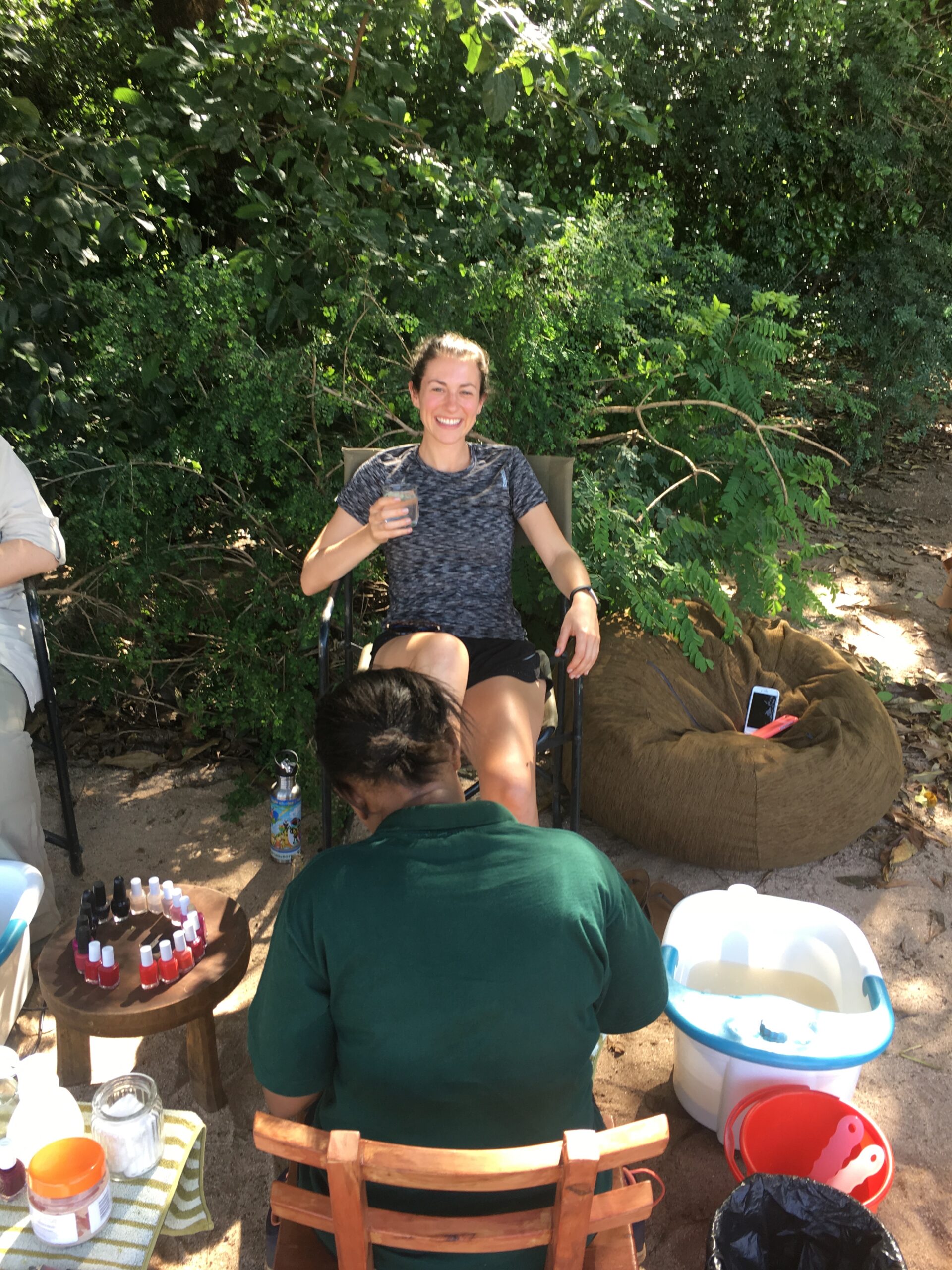
I loved our little spa treatments!
Usually, guests can expect a full camp setup on the dry riverbed, surrounded by forested area. During part of the year, the river is the only water source for miles. This means it’s a prime area for game viewing, especially elephants and buffalos. At other times of the year, the staff set up areas with plush pillows for lounging with nibbles and drinks never more than an arm’s length away. Further along the dry riverbed is a waterfall where we jumped and swam in the rock pools and scrambled up the rocks. I felt like a kid again!
Sometimes it’s hard to find a place this playful; that’s what I loved so much about this camp (and the trip, more generally). While you’re not necessarily spotting tons of game, you get to play again. It changes your perspective on what you’re supposed to do and accomplish on a safari.
The next day we left Lake Manyara N.P., continuing west toward Ngorongoro Crater. Just before exiting Lake Manyara, we took a detour for a treetop walk. It’s not a “must-do” experience but it was fun to follow the interconnected platforms, ground level to canopy. The lush forest is all-encompassing with birds serenading you and monkeys scrambling around.
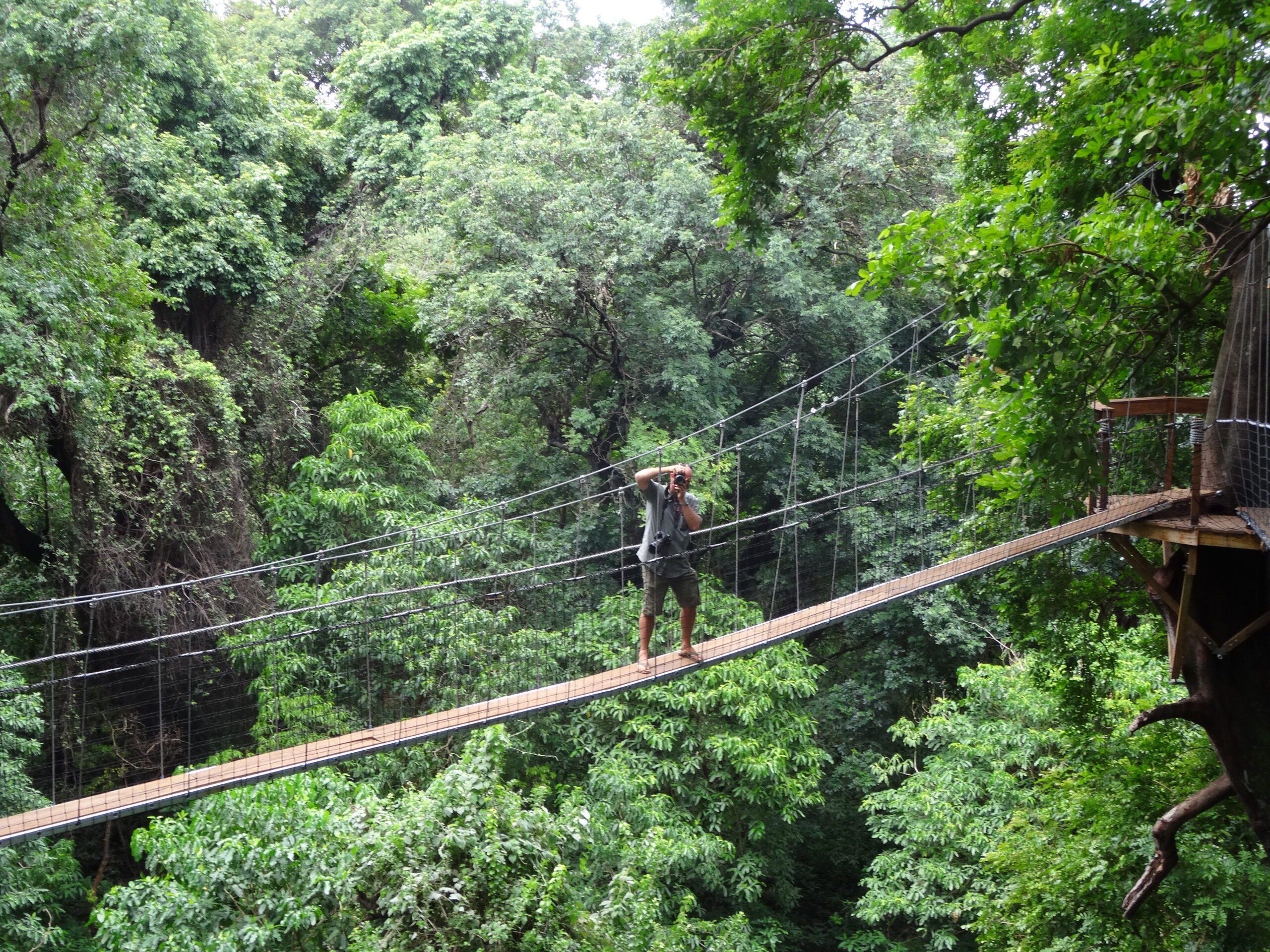
Snapping photos of each other in the treetops – too fun!
Next up: Mto Wa Mbu, a lively village only a short distance from the park. Here, we were able to choose from a number of activities. Half the group opted for a tour of the town by tuk tuk (small/open-air motorized transport known as ‘bajaji’ in Tanzania), but I chose to see the village by bike (walking is an option, too). After cruising through the village and surrounding banana plantations, we ended with a very tasty local lunch.
Ngorongoro Crater
A lot of people consider Ngorongoro Crater as a “must see” in Tanzania. It’s the largest unbroken caldera in the world and spans 100 square miles, with iconic African wildlife such as zebra, gazelle, wildebeest, lion, hyena and leopard, to name only a few. We spent the night on the crater rim and early the next day, we descended to the crater floor around sunrise. From the vehicle, we could see headlights descend the Crater, and the area was quickly swarmed with other safari-goers. So while I get the appeal of this natural site, herein lies my issue with Ngorongoro Crater; the game was great but it never felt private or exclusive. There are just so many vehicles! That being said, if you are short on time with wildlife as your main priority, the Crater will check the boxes. But if you have more time and other camps/parks to explore, there will be many more exclusive experiences elsewhere.
Serengeti National Park
After our early morning jaunt to the Crater, we continued west to the famed Serengeti National Park. It was a long drive, but perfect for a snooze after our predawn wakeup. Tanzania’s Serengeti ecosystem spans approximately 6,000 square miles and joins with Kenya’s Maasai Mara to the north. The landscape consists of rolling plains dotted with acacia trees, meandering rivers and rocky kopjes and changes drastically as you move south to north. It’s as beautiful as it sounds.
Lunch in the beautiful Serengeti.
I stayed in a “walking camp”, a mobile camp set up in a designated walking zone which moves throughout the Serengeti along with the migration. You’re not allowed to game drive in walking zones so it’s a very serene and private experience. The walking camp was a basic affair without the added frills but the location was the real selling point. The tents were arranged underneath a canopy of trees, looking out across the open plains beyond. Both mornings we scrambled up the towering kopje overhead for breathtaking sunrises over the Serengeti, with the enormous herds of wildebeest in the distance.
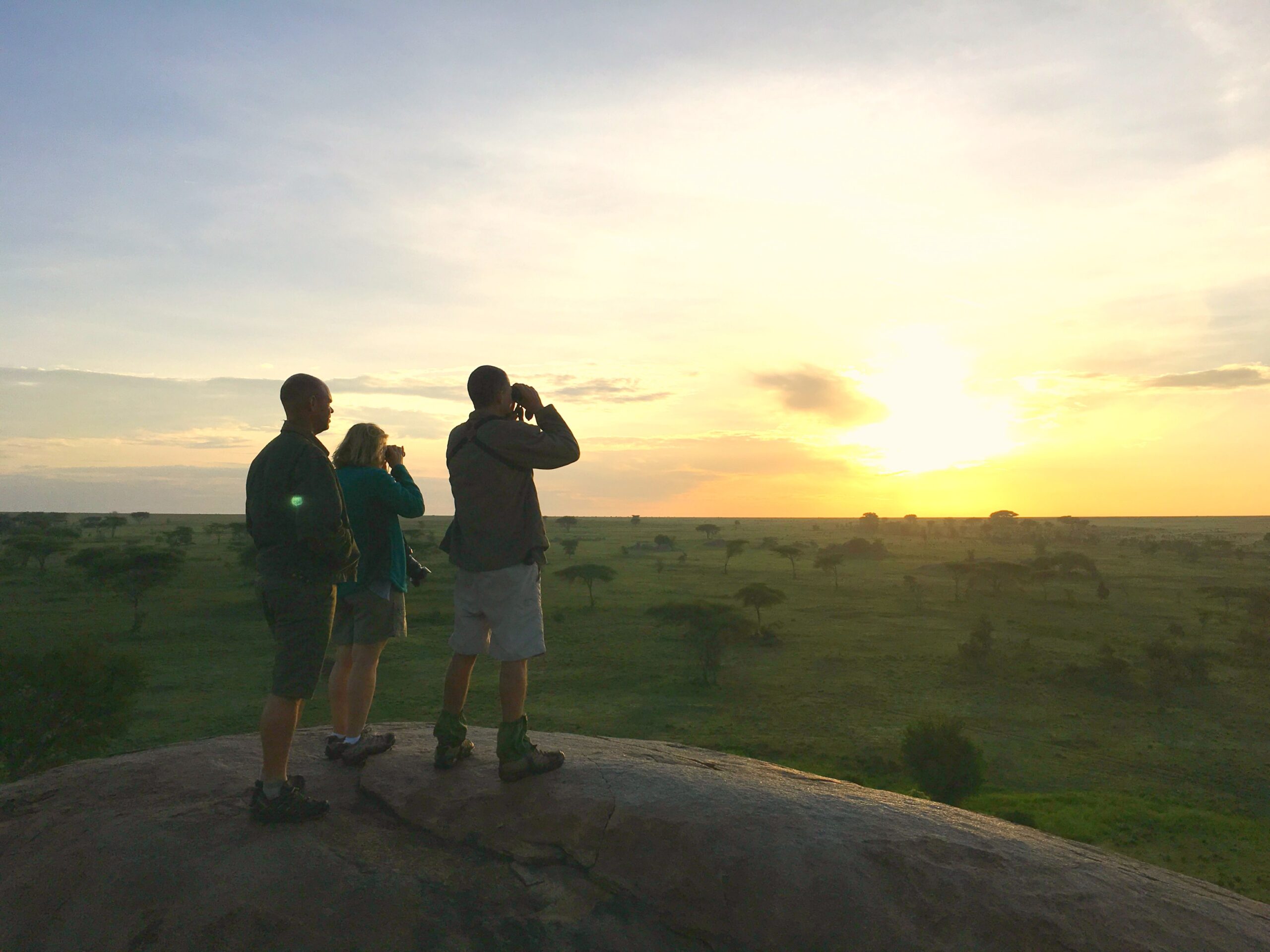
My new traveler friends atop the kopje.
The guide led us on foot around the area for hours at a time. Here, we were able to soak in the vast expanses of wilderness at our own pace, listening to the grasses rustling beneath our feet. I really enjoy stretching my legs in the great outdoors, rather than being cooped up in a vehicle all day. Not only do walking safaris increase your chances of connecting and engaging with fellow travelers but you can also take more time to connect with yourself. I was able to break off on my own for some really special “Zen” moments and which are so valuable and rare in everyday life!
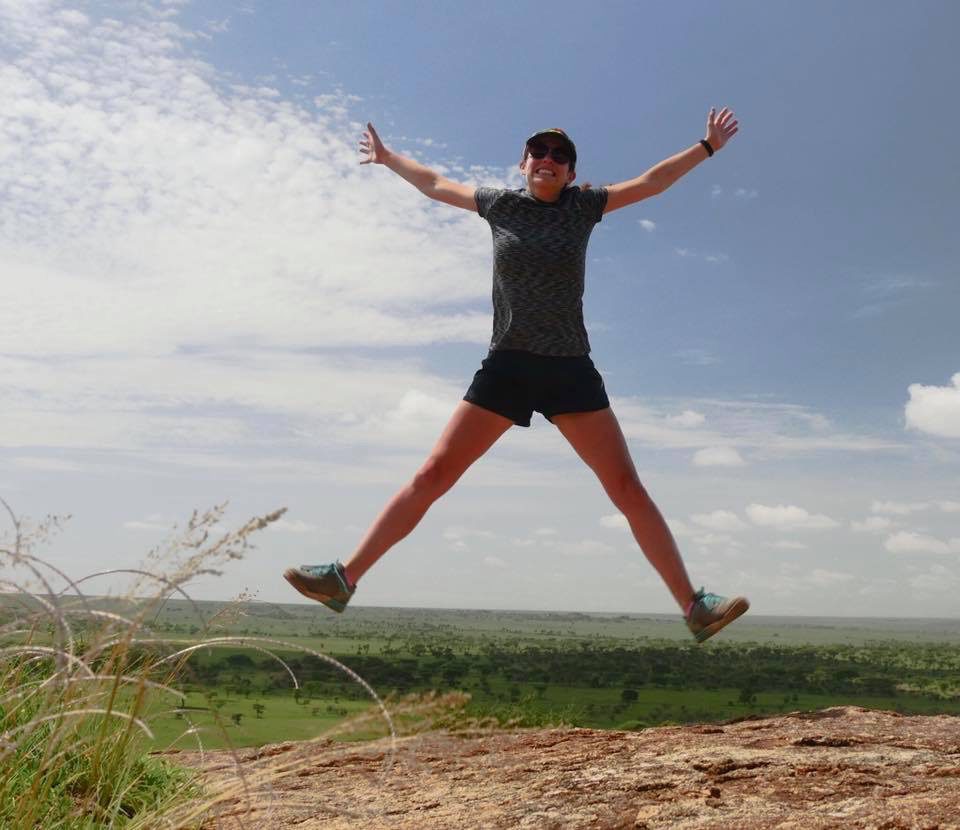
There’s nothing like the fresh air and sunshine of safari!
After two incredible days and nights at the walking camp, we continued to the next (permanent) camp via game drive. (That’s one thing I liked about all the driving – you were either game driving from one site to the next, or you were driving through beautiful countryside!) On our drive out of camp, we had some amazing tree-climbing lion sightings and a very dramatic interaction with a lone baby wildebeest that wanted to be adopted by our vehicle.

Our very own tree-climbing lion!
The final camp was set atop Naabi Hill. This last evening we celebrated, sang and danced around a fire beneath the African night sky. It was the perfect end to an unforgettable trip.
Call (212) 226-7331 or email [email protected] for more information about tailor-making an “alternative” safari like Pearl’s Tanzania trip for you.
